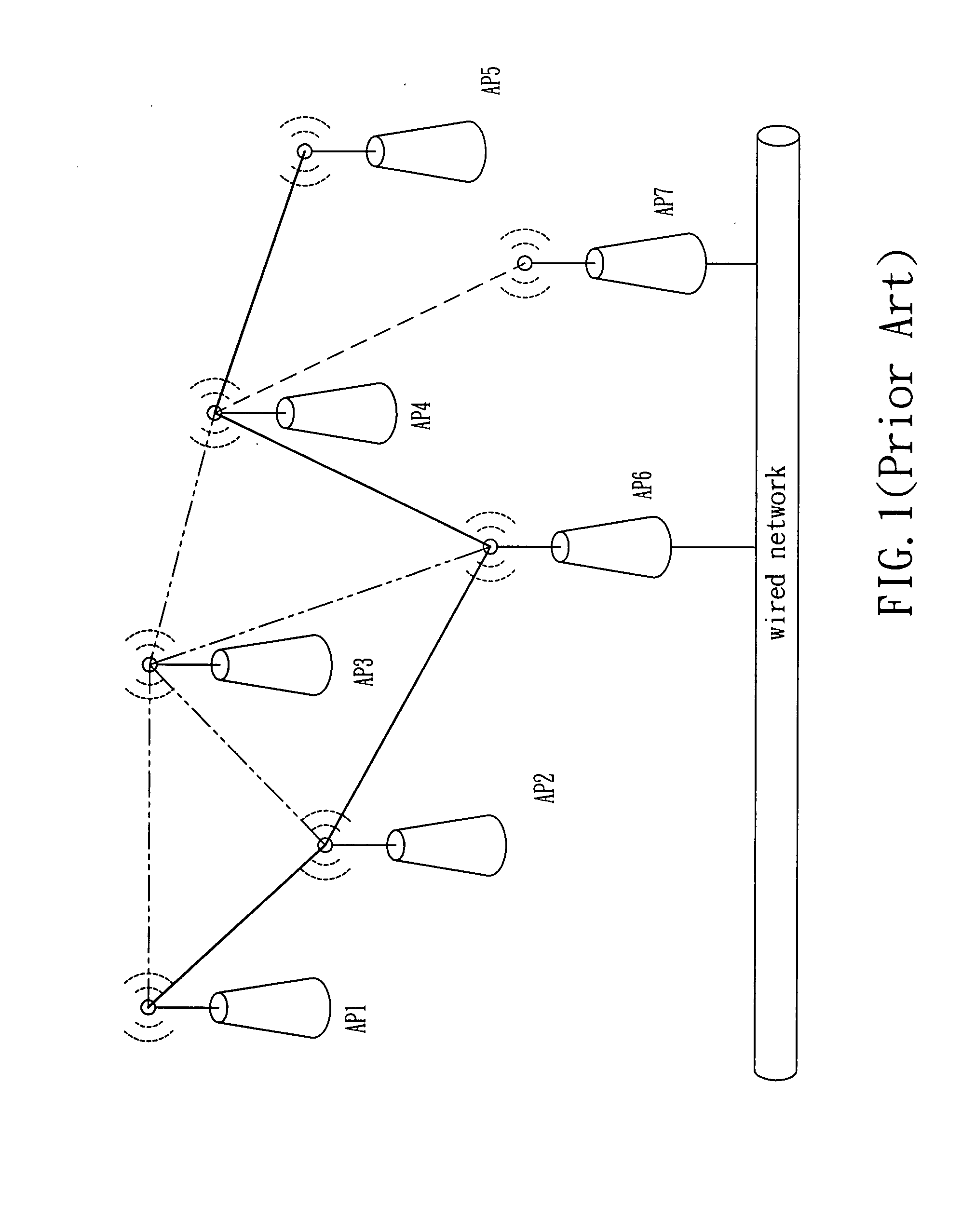Topology system of wireless network with dynamic balance
- Summary
- Abstract
- Description
- Claims
- Application Information
AI Technical Summary
Benefits of technology
Problems solved by technology
Method used
Image
Examples
first embodiment
[0075]Please refer to FIG. 4 where the case of an access point joining a topology system of wireless network is illustrated, in the present invention, the access points AP8 and AP9 are pure access points, the hop count and service hop count of access point AP8 are 2 and 3 respectively, those of access point AP9 are both 3, and the ranges of signal of both access points cover access point AP10.
[0076]Both access points AP8 and AP9 have joined the topology system of wireless network, so through periodical broadcast, both access points AP8 and AP9 send probe request frames in which all fields of the IE are embedded to enable the access point AP10 to receive the probe request frames of access points AP8 and AP9 and store each field in its own database (because how to use the database and its procedure are common in the field of information engineering, so the description below is limited to the logic operations), thereby access point AP10 may determine with which access point should it e...
second embodiment
[0077]FIG. 5 illustrates the present invention that each access point is turned on sequentially, and the access points AP11 and AP12 are linked with a wired network while the access point AP13 is not.
[0078]At first, when the access point AP11 is turned on before the access point AP12, the access point AP11 changes its mode to root access point on its channel because there's no other root access point detected, and declares its status of existence through broadcasting the probe request frame periodically.
[0079]Next, after the access point AP12 is turned on (at the time of mark C in FIG. 5), it scans all channels to detect the topology system of wireless network. Due to that the access point AP12 will be aware of the access point AP11 and its channel, and the access point AP12 itself is linked with the wired network either, it will change its channel to one with less interference and operate as a root access point, as well as broadcasting the probe request frame periodically like the ...
PUM
 Login to View More
Login to View More Abstract
Description
Claims
Application Information
 Login to View More
Login to View More - R&D
- Intellectual Property
- Life Sciences
- Materials
- Tech Scout
- Unparalleled Data Quality
- Higher Quality Content
- 60% Fewer Hallucinations
Browse by: Latest US Patents, China's latest patents, Technical Efficacy Thesaurus, Application Domain, Technology Topic, Popular Technical Reports.
© 2025 PatSnap. All rights reserved.Legal|Privacy policy|Modern Slavery Act Transparency Statement|Sitemap|About US| Contact US: help@patsnap.com



